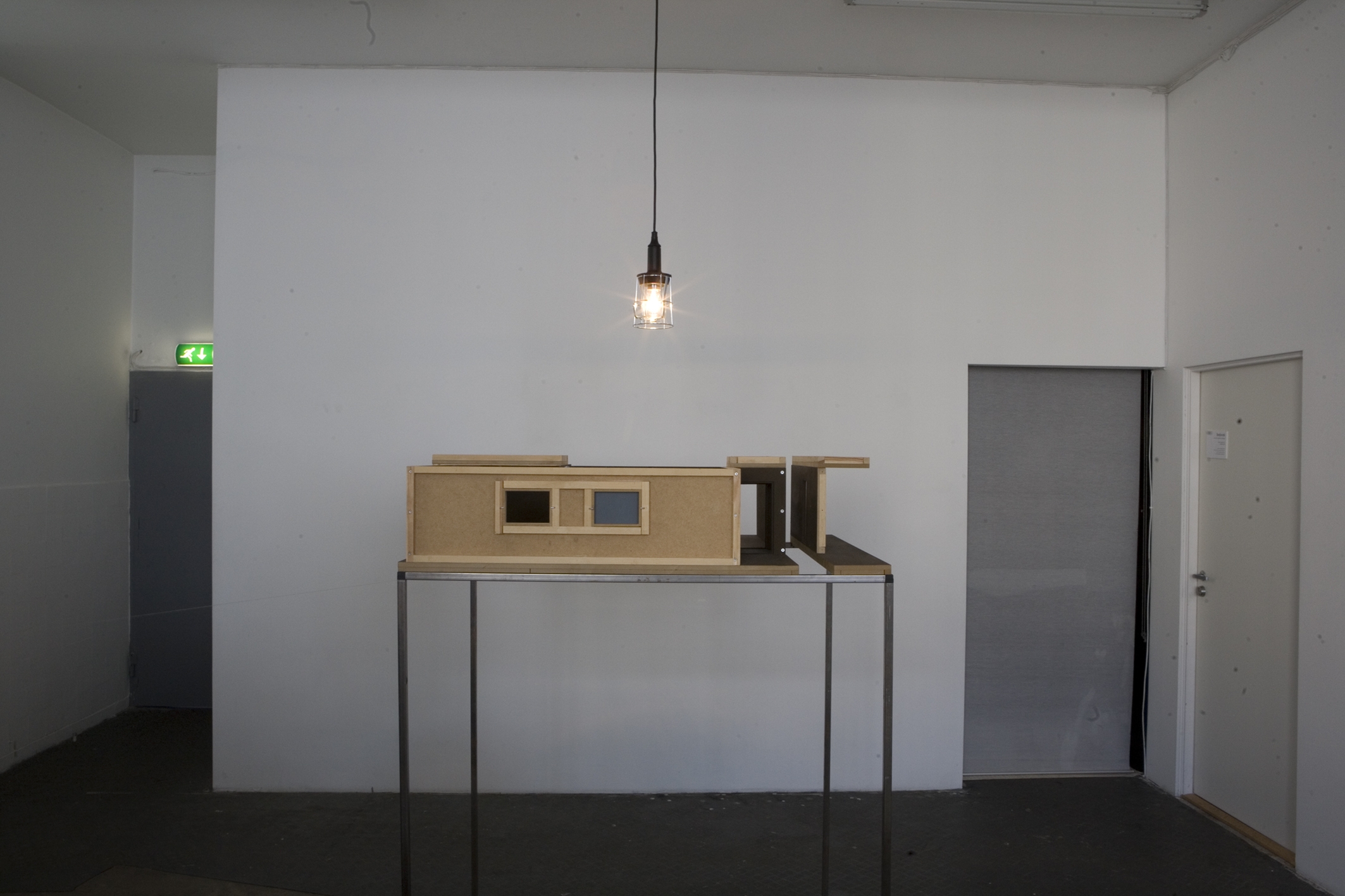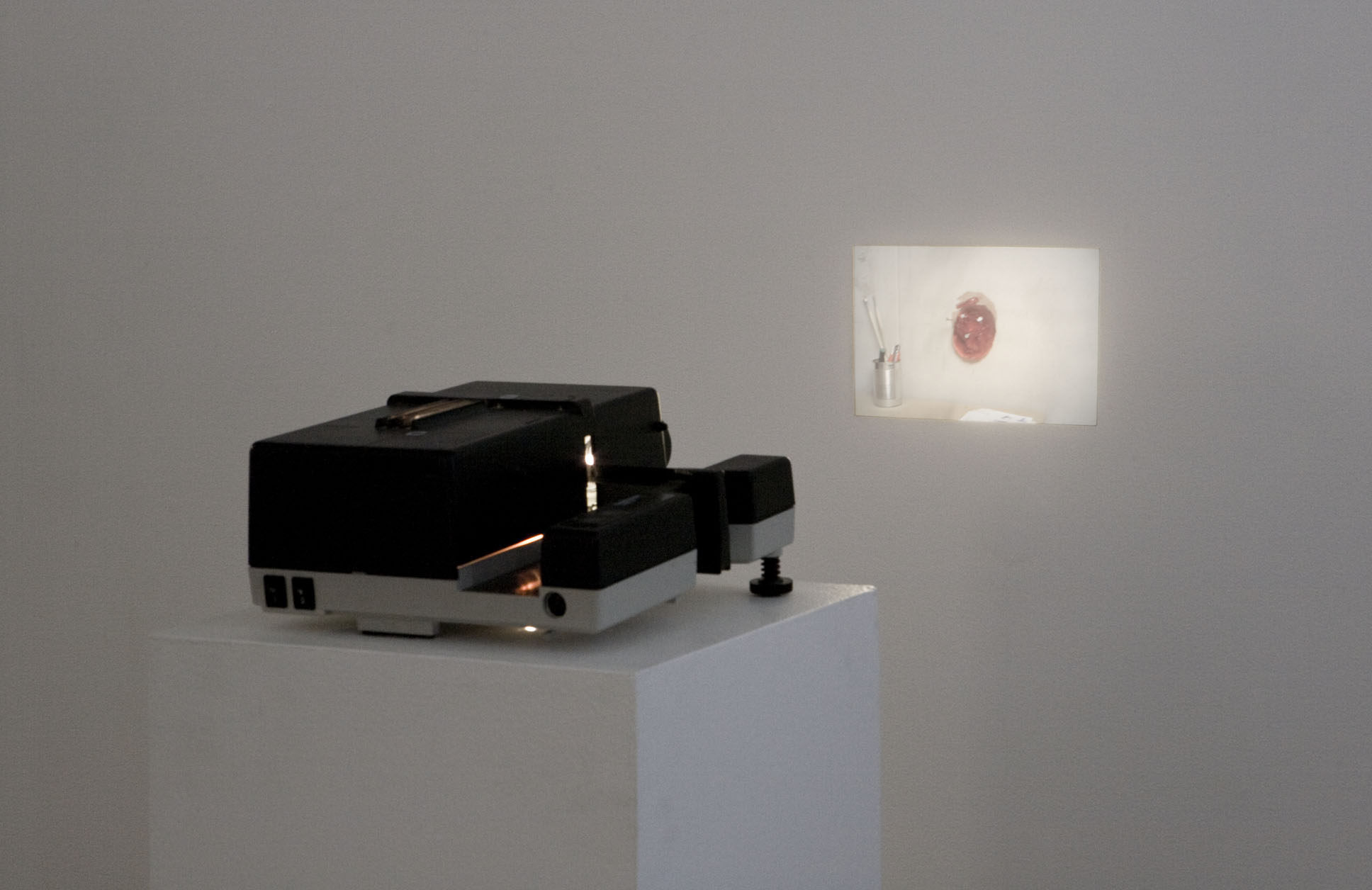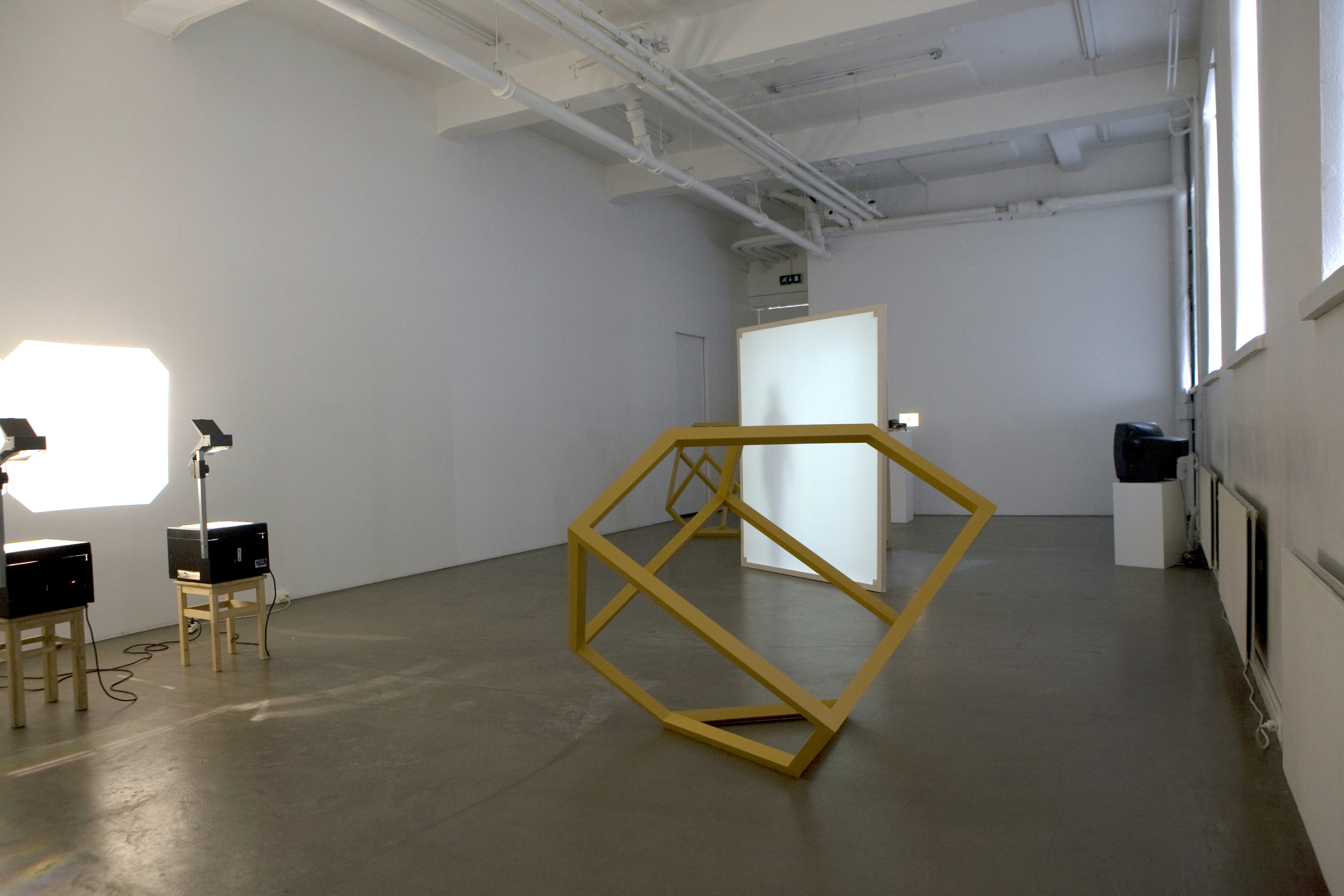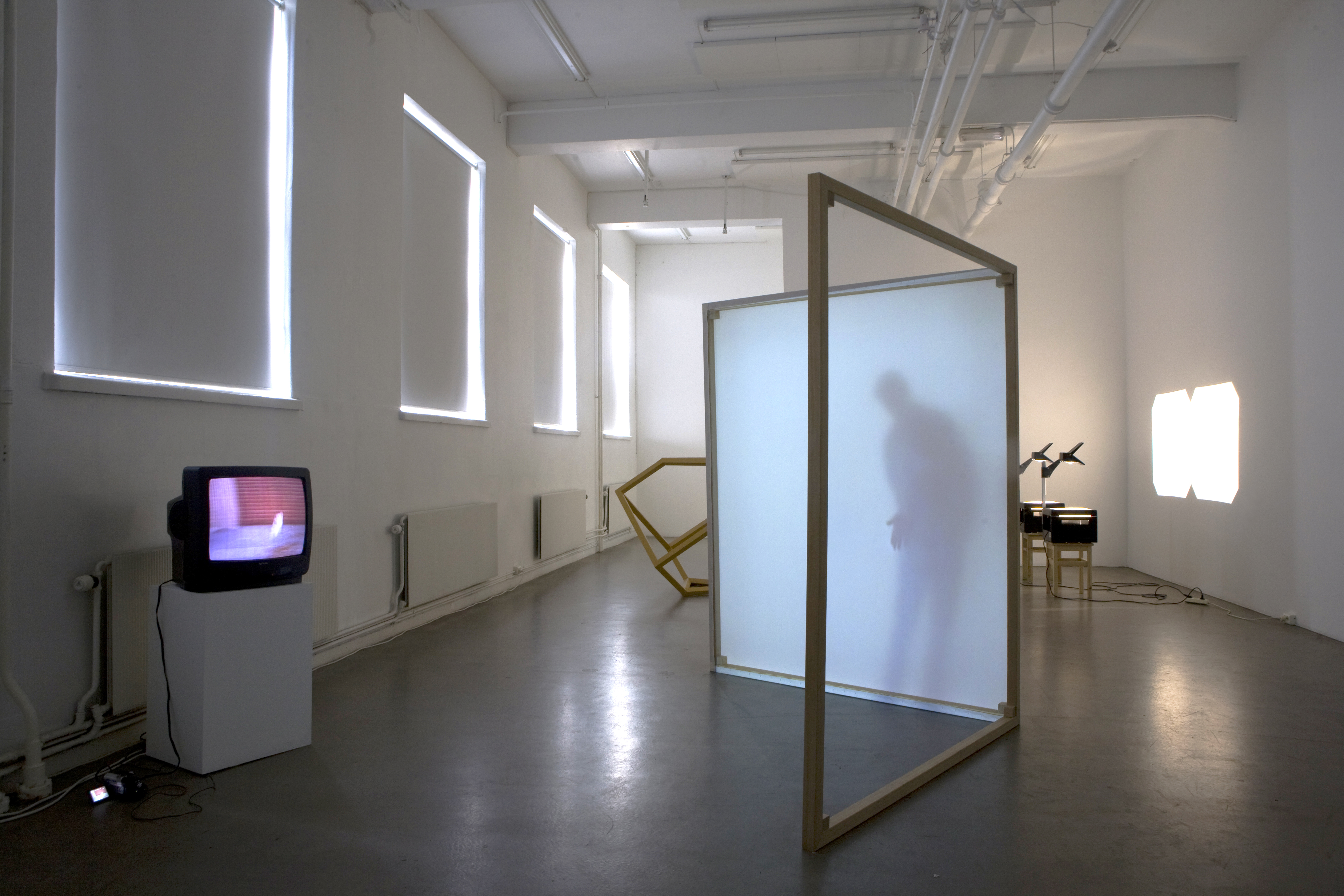Jakob Simonson presents the video installation Untitled (Projection). Figures appear at irregular intervals, they approach the projection screen, examine the space they are in and the frame surrounding it before leaving again. The sculpture Untitled (Arrival) takes as its point of departure the artist’s memory of a tavern described in Franz Kafkas novel “The Castle” (1926). In the process of trying to make this memory clear, the tavern is disconnected from the novel itself, but still no precise image is constructed. The model does not form a completed whole, but rather a collection of elements that can be reconfigured according to the artist’s changing idea of how he envisioned the house while reading the novel for the first time.
Stian Eide Kluges work Untitled (Pappa) / Untitled Folder [Overhead Edition] reproduces two drawings using outmoded overhead projectors. The drawings are projected on the wall in their original size, appearing almost like ghosts of the originals. A sequence from the feature film ”American Beauty” (1999) is the basis of the work Untitled (Sometimes There is so Much Beauty in the World it Feels Like My Heart is Just Going to Cave in / Video as a Poor Excuse). In the film the footage in this sequence can be seen on a TV screen in front of the main characters. The artist has filmed the sequence off a TV monitor while cropping it in the video camera, making the footage appear as authentic to the viewer as it does to the film’s protagonists.
The sculptures Contra Melancholia by Steffen Håndlykken, are based on a detail in Albrecht Dürer’s etching ”Melencolia I” (1514). In Dürer’s allegorical work, we see a many-sided block of stone surrounded by a sculptor’s tools, representing a work that is unfinished or not yet begun. It is a product of the melancholic’s disinclination to act. Dürer drew this object according to his own research into the theory of perspective, which he sought to base on mathematical construction rather than simple observation. Distortions intrinsic to Dürer’s technique make a physical manifestation of the form more complex than what the draughtsman originally had in mind. In the two slide photos Like Nailing Jelly to a Wall, a figure of speech describing a difficult or impossible task, is given a concrete expression, suggestive of the tradition for transgression in visual art.
On the Six-cornered Snowflake confronts the viewer with absence on many levels; the relationship between the viewer and the depicted, between the works’ physical shapes and their presupposed meaning, and between the artists’ intentions and the finished works. Still, it is not given that this absence leads to misery and melancholy. As for Kepler, the ephemeral adds meaning to the works. And by creating meaning out of nothing, even absence can be a gift.
The exhibition is curated be the three artists taking part in the exhibition.







